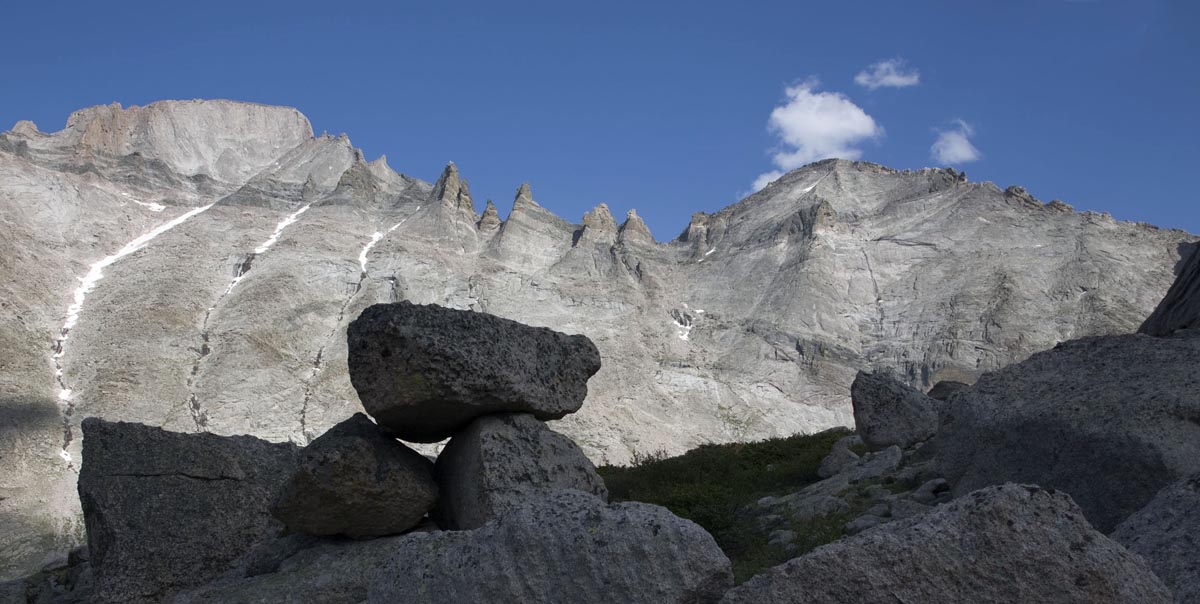
Granite, Rocky Mountain National Park
Not everything in this photo is granite. The dark stripe near the top of Longs Peak (on the left) and most of the top of Pagoda Mountain (on the right) consist of gneiss, a metamorphic rock. But everything else in this photo is granite! The granite intruded the gneiss about 1.4 billion years ago.
This area was glaciated during the Pleistocene, but except for a few small glaciers at the top of some of the cirques, only holds the evidence for glaciers. In Rocky Mountain National Park, the evidence for this glaciation is striking: many erosional features such as bowl-shaped cirques, knife ridges called aretes (such as the one crossing from Longs to Pagoda) and large U-shaped valleys. There are also depositional features in the form of many large moraines.
Like Druid Arch, this area is one of my most favorite places. It's in the upper part of Glacier Gorge, a long U-shaped valley that separates Longs Peak from a host of other peaks. I shot this photo while descending alone from Chiefs Head Peak, a glacially scoured peak to the right of Pagoda, off the photo. I had just reached the easy walking part and was feeling pretty grateful to have arrived safely. Unfortunately, it was starting to get late and I couldn't linger more than a few minutes.
 |
See more images of Rocky Mountain National Park --then type "Rocky Mountain National Park".
See a geologic map of Rocky Mountain National Park.
Return to the "favorites" page.
Return to photography home page.
Go to the first photo, Seastacks at Bandon Beach.